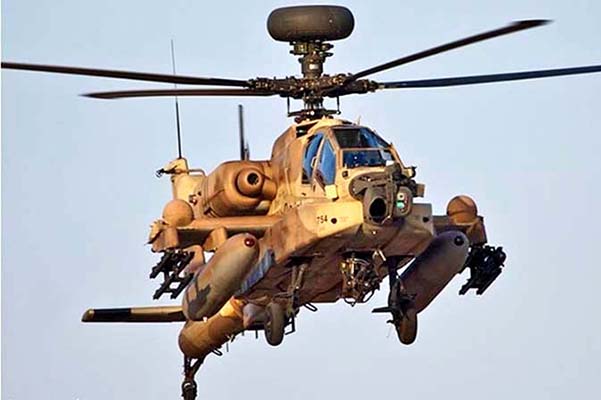
The Indian Army has established a squadron for heavy-duty choppers at Jodhpur along the western front with Pakistan in preparation for the delivery of six Apache attack helicopters that are expected to start from May, 2024.
The squadron was raised in the presence of Army Aviation’s director general Lt Gen Ajay Suri. The delivery, initially scheduled to begin in February, was delayed, with the first three Apaches now expected in May.
Under a Rs 13,952 crore deal signed with the US in September 2015, the Indian Air Force (IAF) has already inducted 22 Boeing-manufactured Apache helicopters. The Army, under a separate Rs 5,691 crore deal inked in February 2020, will receive six choppers.
Often referred to as “tanks in the air,” the Apache helicopters are equipped with Stinger air-to-air missiles, Hellfire Longbow air-to-ground missiles, guns, and rockets. They are primarily intended to provide integrated combat aviation cover for the ‘strike corps’ of the Army.
In coming years, both the Army and the IAF are set to induct 156 indigenous Prachand light combat helicopters. These helicopters are capable of offensive operations in high-altitude areas such as the Siachen Glacier and eastern Ladakh. Fifteen such choppers (10 IAF and 5 Army) have already been inducted under the first Rs 3,887 crore contract for them.
Recognised as the world’s most advanced combat helicopter, featuring an advanced night vision system and the capability to arm missiles that can strike 138 targets in a minute, the Apache AH-64E is a formidable force in the sky with a maximum speed of 280 km/h.
The Apache AH-64E, equipped with AGM 114 Hellfire anti-tank missiles and Stinger missiles, is prepared to handle both ground and aerial threats. The Hellfire missiles are particularly effective against armoured vehicles like tanks and BMPs, while the Stinger missiles are designed to neutralise airborne threats. Additionally, the helicopter is armed with Hydra-70 unguided missiles, which can effectively target ground-based threats.
Light Utility Helicopters
The Army has placed an order for the HAL Light Utility Helicopter under limited series production. The helicopter will replace the fleet of Cheetah and Chetak helicopters.[62] The Indian Army requires 394 light helicopters, which the Defence Ministry decided to meet in two purchases. To meet immediate requirements, 197 light helicopters would be procured on the international market; Hindustan Aeronautics Limited would develop and manufacture 187 HAL Light Utility Helicopter, of which 126 would be for the Indian Army.
Recognised as the world’s most advanced combat helicopter, featuring an advancednight vision system and the capability to arm missiles that can strike 138 targets in a minute, the Apache AH-64E is a formidable force in the sky with a maximum speed of 280 km/h.
The Corps of Army Aviation holds a large number of ageing aircraft like the Cheetah and Chetak, which need replacement by modern helicopters. The role of the corps continues to remain reconnaissance and observation. The absence of medium and heavy lift helicopters, which continues to remain with the Air Force, results in a deficiency of the tactical lift capability. Lack of fixed wing aircraft, when the Indian Navy, Indian Coast Guard and paramilitary forces have them affects functions like command and control, staff transport, logistics, casualty evacuation and communication.
The Army Aviation Corps has several squadrons. In addition, there are several Reconnaissance and Observation (R&O) flights that operate independently and are not attached to any squadrons. These are equipped with Dhruv Utility helicopters, Rudra ALH-WSI helicopters, Prachand Light Combat helicopter, Chetak and Cheetah Utility Helicopters.

















